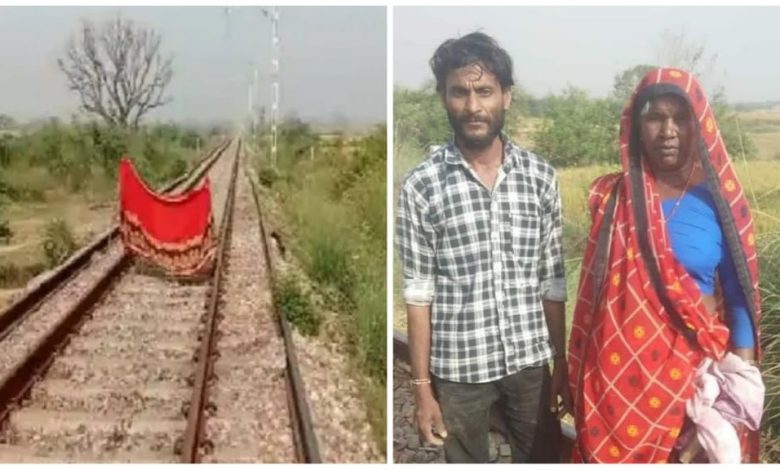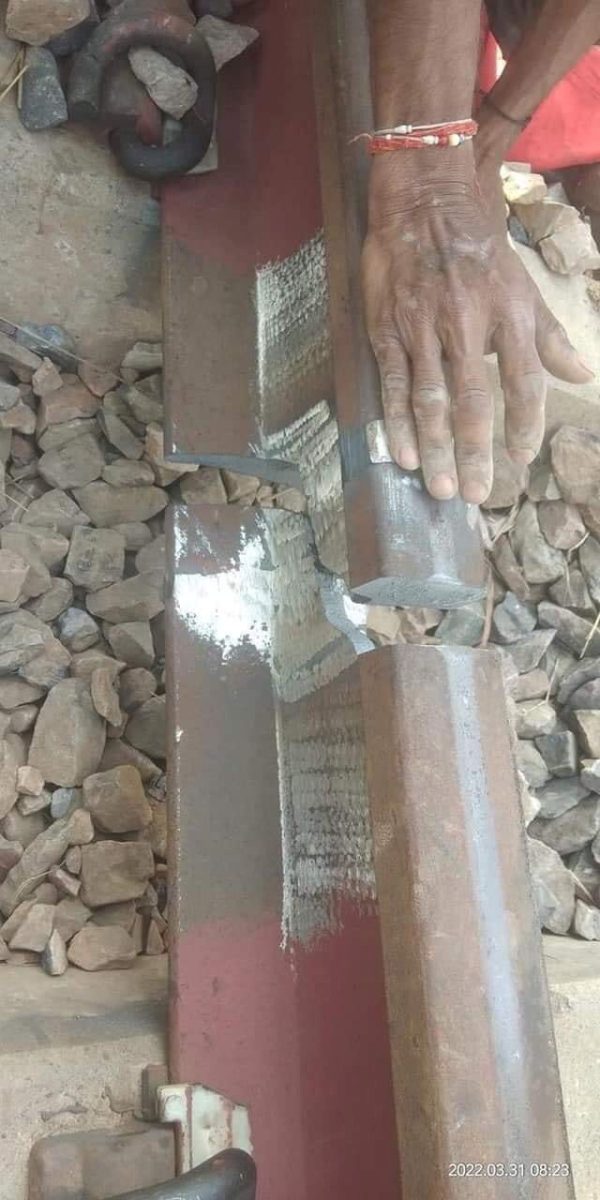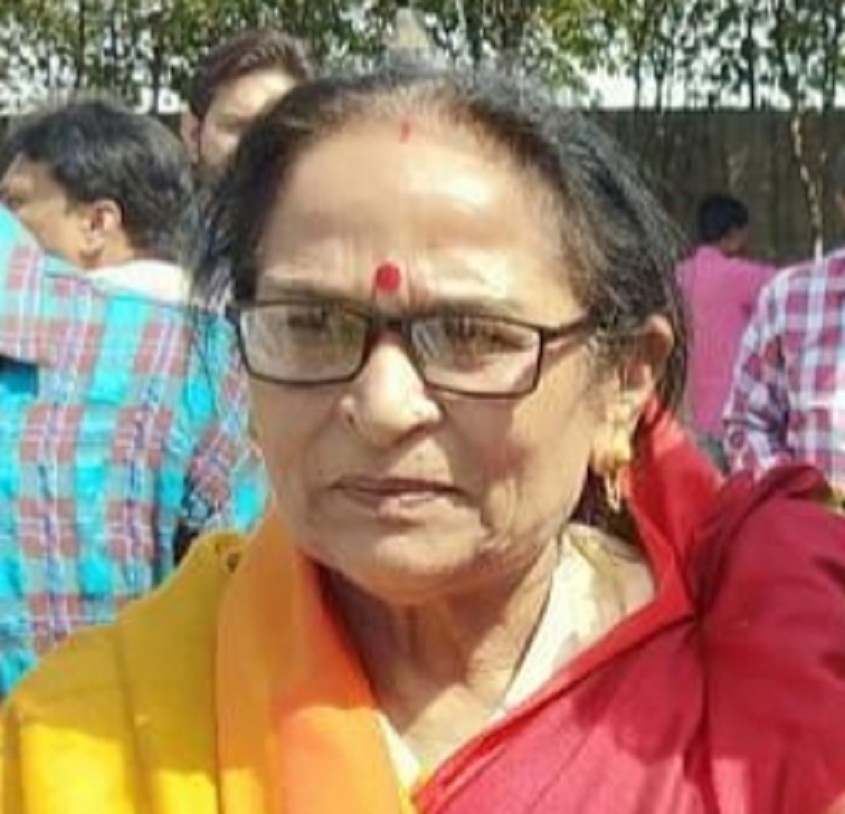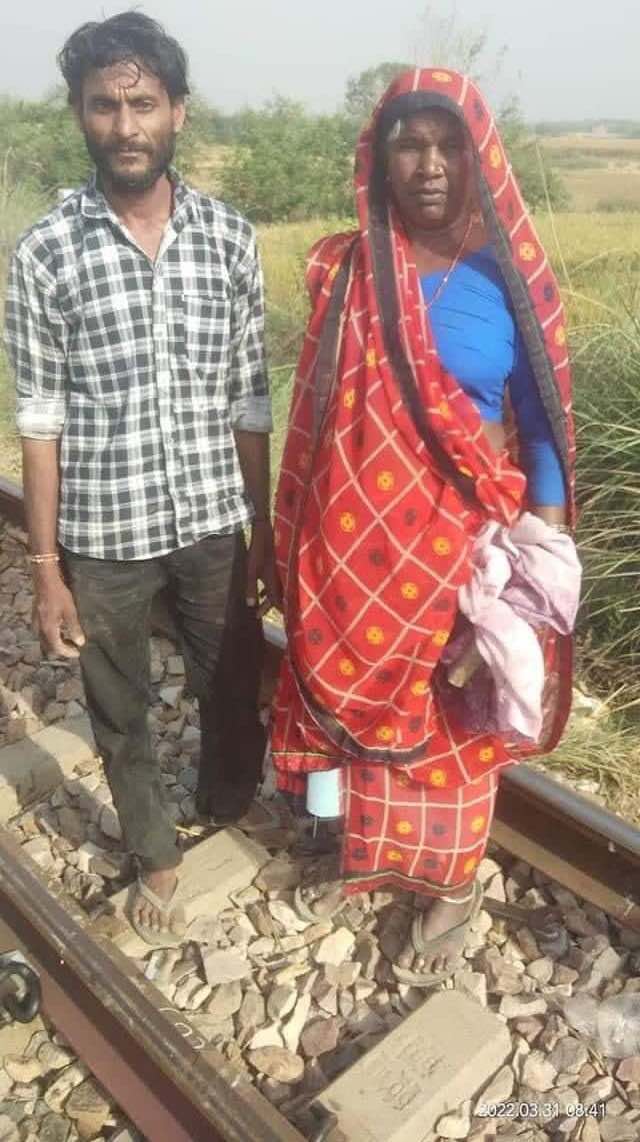The Woman in the Red Sari: How One Brave Act Saved Hundreds of Lives

It was an ordinary morning in Etah, Uttar Pradesh.
The air was thick with the scent of dust and diesel, and a faint rumble of a distant train trembled through the fields.
Omvati Devi, 73 years old, was walking along the tracks toward her small patch of farmland.
She had walked that path countless times before — barefoot, steady, carrying nothing but her day’s purpose.
But on this morning, fate had placed her exactly where courage would be needed.
As she reached a bend near the railway line, her sharp eyes caught something wrong — a faint glint of broken metal, a gap where the steel should have been seamless.
She froze. The rails — the very spine of the track — were cracked open.
And in the distance, she heard it: the unmistakable hum of a train approaching fast.
Her heart pounded. She knew what that meant.
In just minutes, a train carrying nearly 200 passengers would thunder through this line — right into disaster.
There was no time to think, no time to run for help.
So Omvati did the only thing she could.
She tore a piece of her red sari — the traditional garment she had worn for decades — and waved it high in the air, running toward the sound of the train.
The red cloth fluttered violently against the wind, a flag of warning, a scream of color against the gray horizon.
The driver saw her.
He didn’t know who she was, but something about that desperate red wave made him act.
He slammed the brakes.
The train screeched, sparks flying as metal met metal, slowing… stopping… just meters before the damaged section.
Silence fell. Then realization.
Hundreds of lives — mothers, fathers, children, workers heading home — had been saved by the instinct and bravery of one elderly woman and her fluttering piece of red cloth.

“I just did what I thought was right.”
Later, when journalists gathered around her, Omvati’s face was calm.
Her voice was soft, weathered by years of labor and sunlight.
“I was on my way to the fields,” she said simply. “I saw the rail was broken, and I knew something terrible could happen.
People always say red means danger, so I waved my sari to stop the train. God must have helped me.”
Her words were humble, almost casual — but what she did was nothing short of extraordinary.
She had no phone. No tools. No authority.
Just awareness, instinct, and a heart big enough to care for strangers she would never meet.
The driver, grateful and shaken, stepped out to thank her.
He offered her 100 rupees — a small token of gratitude.
Omvati refused. “I didn’t do it for money,” she said. “I did it to save people.”
The Red Sari That Stopped Death
In India, the sari is more than a garment — it’s heritage, identity, and womanhood woven in fabric.
But that day, Omvati’s red sari became something greater: a symbol of human courage.
Red — the color of danger, of alert, of sacrifice — turned into a flag of love and humanity.
The very fabric she wore every day for modesty and tradition became a shield for hundreds of lives.
As the story spread, people across India began calling her “the woman in the red sari.”
On social media, thousands shared her picture — a tiny silhouette of an old woman standing by a massive train, sari fluttering like a flag of hope.
Some wrote, “Not all heroes wear capes — some wear saris.”
Others called her “India’s Guardian Angel.”

What Courage Looks Like
In a world where headlines are filled with division, fear, and indifference, Omvati’s story reminded millions of what real heroism looks like.
It’s not always loud.
It doesn’t always come with medals or uniforms.
Sometimes, it’s a 73-year-old woman, alone on a dusty railway track, who refuses to walk away when danger appears.
Her bravery was not born of training or power — it came from compassion, from the quiet strength of someone who still believes that one life saved is worth everything.
Authorities later confirmed that if the train hadn’t been stopped in time, it would have derailed — a catastrophe that could have killed or injured hundreds.
Because of one moment of awareness, hundreds of families made it home that night.
A Reminder to the World
In the rush of modern life, stories like Omvati Devi’s are reminders of something precious — that ordinary people are capable of extraordinary courage.
She didn’t wait for someone else to act.
She didn’t think, “It’s not my problem.”
She saw danger — and chose to face it.
Her act rippled far beyond the tracks that day.
It became a lesson in empathy, awareness, and responsibility.
A reminder that heroism doesn’t ask for permission — it happens in the split second when your heart decides to care.

Voices of Gratitude
When the news reached nearby towns, people came to thank her.
Children in local schools learned her story as an example of bravery.
Online, tributes poured in:
“A true hero of India. Her courage should be honored.”
“May we all have the heart of Omvati Devi when others are in danger.”
“She saved lives with nothing but a red sari — that’s what humanity looks like.”
Even railway officials visited her village to commend her presence of mind.
Yet, Omvati remained humble. “I did what anyone should do,” she said. “If you see danger, you stop it.”
Beyond the Headlines
Long after the cameras left and the reporters stopped calling, Omvati returned to her daily routine — tending to her land, feeding the animals, and caring for her family.
But something had changed.
The villagers now looked at her differently — with pride, with respect, with a quiet awe.
The railway company fixed the track.
The train resumed its journey.And Omvati continued hers — an ordinary woman who had done something extraordinary.

The Legacy of the Red Sari
Some stories fade. Others live on — whispered in classrooms, retold in train compartments, shared across screens.
The story of Omvati Devi belongs to the latter.
It’s the story of how one act of quick thinking and compassion can ripple across an entire nation.
It’s about the strength that comes not from power, but from heart.
And it’s about a simple truth — that courage wears many faces, and sometimes, it wears a red sari.
When people talk about heroes, they often think of those in uniforms, medals, or history books.
But heroism is not about titles.
It’s about moments — the ones where someone, somewhere, chooses to do the right thing, even when no one’s watching.
That morning in Uttar Pradesh, under the rising sun, a 73-year-old woman stood on a railway track, waving her red sari — not knowing she was writing her name into history.
And because of her, hundreds of strangers lived to see another sunrise.











